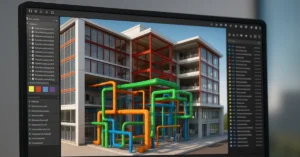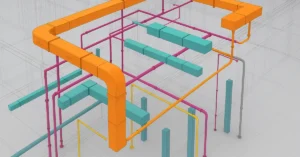Discover the Most Underrated Yet Striking Brutalist Architecture in Amsterdam
Amsterdam, widely celebrated for its historic canals, Dutch Baroque facades, and charming row houses, may not be the first city that comes to mind when thinking about Brutalist architecture. Yet hidden among the cobbled lanes and scenic waterways is a surprisingly rich collection of Brutalist structures that reflect a bold and often overlooked chapter in the city’s architectural journey. These concrete marvels emerged in post-war Amsterdam, aiming to express modern ideals through uncompromising design and materials.
While some see them as austere or even oppressive, others celebrate their monumental character and sculptural quality. In this blog, we take a deep dive into the most underrated Brutalist buildings in Amsterdam—examining their history, design significance, and cultural context.
What is Brutalist Architecture?
Brutalist architecture is defined by its rugged use of raw concrete, monolithic structures, and functional aesthetic. Originating in the 1950s and flourishing through the 1970s, Brutalism became a favored style for government buildings, universities, and housing developments across Europe. The style offered an architectural language that was both expressive and utilitarian, often reflecting socialist ideals and post-war reconstruction efforts.
In the Netherlands, and particularly Amsterdam, Brutalism found fertile ground during periods of rapid urbanization and housing shortages. Many of these structures were seen as radical departures from traditional Dutch architecture and are only now being appreciated for their historical and artistic value.
Amsterdam’s Most Underrated Brutalist Gems
1. Rijksbelastingdienst (Dutch Tax Office)
Location: Sloterdijk, Amsterdam-West
Architect: G.J. de Broekert
Year: 1976
Tucked away in the business district of Sloterdijk, this massive structure houses the former Dutch Tax Office. With its stark repetition of horizontal lines and brutal slabs of concrete, it is one of the most defining Brutalist landmarks in the city. Its presence looms large, asserting both authority and permanence.
2. Bijlmermeer Housing Complex (Bijlmer)
Location: Amsterdam-Zuidoost
Architect: Siegfried Nassuth
Year: 1966–1975
Bijlmermeer, or the Bijlmer, is perhaps the most controversial urban planning project in Dutch history. Conceived as a utopian solution to urban housing, the complex features honeycomb-like high-rise towers built in the Brutalist style. Despite early criticism due to social and maintenance issues, recent years have seen growing appreciation for the architectural vision that birthed this iconic neighborhood.
3. Burgemeester Tellegenhuis (De Bunker)
Location: Weesperzijde 30A, Amsterdam-Oost
Architects: Sier van Rhijn & Kees Rijnboutt
Year: 1969
This heavily fortified concrete tower, affectionately nicknamed “De Bunker,” was once a student dormitory for the University of Amsterdam. With its exposed concrete, narrow slit windows, and brutal form, the building lives up to its nickname. Though currently vacant and awaiting renovation or demolition, it remains a stark reminder of Amsterdam’s flirtation with brutalism.
4. Tripolis Complex
Location: Amstelveenseweg, Amsterdam-Zuid
Architect: Aldo van Eyck
Year: 1990
While not a pure example of Brutalism, the Tripolis Complex by Aldo van Eyck integrates Brutalist elements in its use of exposed concrete and bold geometric forms. The three interlocking office towers are known for their complexity and humanistic approach to modern design. The recent redevelopment by MVRDV has revived interest in this post-modern take on Brutalist traditions.
5. Marineterrein Amsterdam
Location: Kattenburgerstraat, Amsterdam-Centrum
Architect: Unknown (Various government architects)
Year: 1960s–1970s
This former naval base houses several Brutalist-style buildings used for military training, education, and administration. Hidden from public view for decades, the site is now gradually being opened up for mixed-use development. Its Brutalist architecture is utilitarian yet powerful, offering a unique contrast to the picturesque surroundings.
Cultural and Historical Context of Brutalism in Amsterdam
Brutalism in Amsterdam arose from a specific social and political climate. After World War II, the Netherlands faced severe housing shortages and economic instability. Architects and urban planners turned to Brutalist design to address these needs affordably and efficiently. The emphasis was on practicality, durability, and egalitarian ideals.
Unlike traditional Dutch styles, which emphasized ornamental details and symmetrical facades, Brutalist structures were unapologetically bold. They served as both architectural experiments and statements of intent—breaking from the past to shape a new, modern future.
While some of these buildings were met with skepticism or outright disdain, others were embraced for their ambition and clarity of purpose. Today, these structures are being reconsidered through a new lens: one that values their sculptural qualities, historical significance, and resilience.
Public Perception and Shifting Attitudes
The starkness of Brutalist architecture has always evoked strong reactions. In Amsterdam, many of these buildings were initially labeled as eyesores or symbols of bureaucratic coldness. However, a new generation of architects, historians, and urban explorers is championing their revival.
Preservation campaigns have emerged around buildings like De Bunker and the Bijlmer towers, advocating for adaptive reuse rather than demolition. Online communities and architecture tours increasingly celebrate these structures, offering alternative narratives to the dominant aesthetic preferences of the city.
Why Brutalism in Amsterdam Deserves More Attention
Amsterdam’s Brutalist buildings tell an essential story about the city’s evolution—how it grappled with growth, identity, and the desire to redefine urban life. These structures are not just buildings; they are ideological artifacts, representing a moment in time when architecture was meant to transform society.
Their rough textures, strong lines, and imposing forms demand attention. In a city known for its postcard-perfect views, they challenge viewers to reconsider beauty, form, and function. They stand in defiant contrast to decorative gables and tidy canal houses, offering instead an honest and raw depiction of human ambition.
Exploring Amsterdam’s Brutalist Side: A Suggested Tour
If you’re interested in uncovering these hidden gems, consider crafting your own Brutalist walking or biking tour through Amsterdam:
- Start at Sloterdijk with the former Dutch Tax Office
- Head southeast to Bijlmermeer and explore the remaining high-rises
- Stop by De Bunker in Amsterdam-Oost for photos and contemplation
- Cycle down to the Tripolis Complex and admire Aldo van Eyck’s design
- End at Marineterrein to see how these structures are being reimagined
This tour will give you an immersive experience into a side of Amsterdam that remains largely unexplored by mainstream tourists.
Conclusion: Embracing the Concrete Legacy
Brutalist buildings in Amsterdam are often overshadowed by the city’s more traditional and tourist-friendly architecture. But those willing to look deeper will find an extraordinary layer of architectural history that is bold, intellectual, and profoundly human. These underrated concrete structures may not be universally loved, but they deserve a place in the city’s architectural narrative.
As urban development continues and design trends evolve, preserving Amsterdam’s Brutalist heritage becomes increasingly important. These buildings remind us that architecture is not only about aesthetics but also about purpose, experimentation, and the values of the time in which it was created.
So the next time you’re in Amsterdam, don’t just look up at the gables—look around and find the beauty in the concrete giants that helped shape the city’s modern soul.
If you’re interested in learning more about architecture firms in Europe, check out this comprehensive list of the top 50 firms compiled by Archgyan. From innovative startups to long-established industry leaders, this list has it all. Take a look and discover some of the most inspiring and influential architecture firms in Europe today.
If you’re interested in architecture and want to learn more about this amazing field, subscribe to our podcast on youtube
For more SketchUp tutorials, head to https://www.sketchupguru.com










